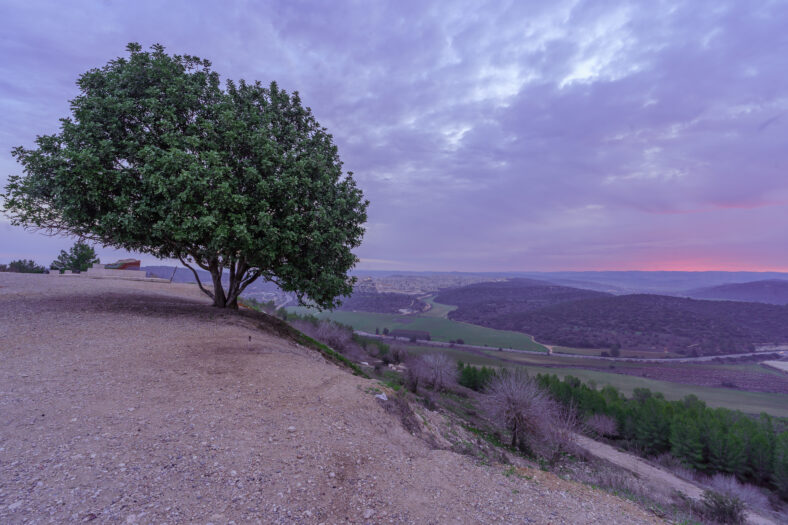A Toddler Found An Ancient Amulet From The Middle Bronze Age While Hiking With Her Family

While on a hike with her family along a trail in Israel, a 3-year-old girl picked up a small stone. It turned out to be a 3,800-year-old scarab amulet dating back to the Middle Bronze Age.
The girl, Ziv Nitzan, discovered the ancient Canaanite scarab when her family was visiting Tel Azekah, a historical site near the city of Beit Shemesh that was inhabited by humans as early as the Bronze Age.
“Out of the 7,000 stones around her, she picked up one stone,” said Omer Nitzan, Ziv’s older sister, in a translated statement from the Israel Antiquities Authority (IAA). “Then, she brushed off the sand and saw that something was different about it.”
When Ziv’s siblings realized what she had found, they alerted their parents to the find. The family decided to hand it over to the government.
Later, archaeologists determined that it was a Canaanite scarab from the Middle Bronze Age. Canaan included parts of modern-day Israel and the Palestinian territories of Lebanon, Syria, and Jordan, according to ancient historical texts.
Scarabs are small, decorated objects with origins in ancient Egypt. They are usually shaped like dung beetles, which was considered a sacred symbol of new life by the ancient Egyptians, per the IAA.
When dung beetles rolled dung balls, the ancient Egyptians were reminded of the sun god rolling the sun across the sky.
They also believed that dung beetles could reproduce spontaneously, so they connected the bugs with the primary god of creation as well.
“Scarabs were used in [the Middle Bronze Age] as seals and as amulets,” said Daphna Ben-Tor, the curator of Egyptian archaeology at the Israel Museum.

Sign up for Chip Chick’s newsletter and get stories like this delivered to your inbox.
“They were found in graves, in public buildings, and in private homes. Sometimes, they bear symbols and messages that reflect religious beliefs or status.”
Archaeologists have been excavating Tel Azekah for almost 15 years. In that time, they have come across evidence of cultural changes throughout history.
Recent archaeological findings indicate that Tel Azekah housed one of the most important cities in the area during the Middle Bronze and Late Bronze Ages.
Tel Azekah is located high above sea level and once served as a control center for a series of roads that traveled in all directions. For thousands of years, the city of Azekah thrived because of its strategic location, which was filled with natural resources.
The scarab is just one of the many Egyptian and Canaanite artifacts discovered at Tel Azekah, indicating that Canaan and Egypt were closely connected back then.
The IAA presented Ziv with a certificate of appreciation for good citizenship for her remarkable find. The scarab will go on display at the Jay and Jeanie Schottenstein National Campus for the Archaeology of Israel.
More About:News





